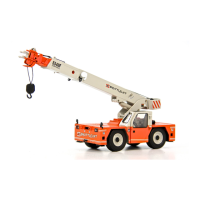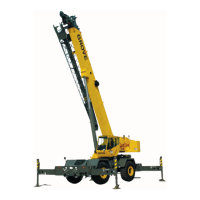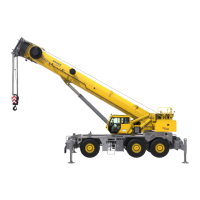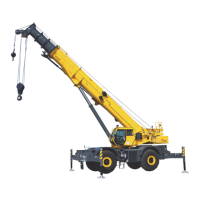8-14
Published 01-29-2014, Control # 496-00
UNDERCARRIAGE TMS800E SERVICE MANUAL
Functional Check
A periodic functional check of the power steering system will
generally be adequate to ensure satisfactory service.
1. Check all fittings for leakage. Accumulation of moist,
black dirt is a good indication of leakage.
2. Turn the steering wheel through the full range with the
engine running at both idle and full throttle. Do this with
the machine stationary and moving. Note any speed
irregularities and sticky sensation. This may indicate dirt
in the fluid. If the steering wheel continues to rotate
when started and released, a condition known as
motoring exists. This may also indicate dirt in the fluid.
3. Ensure the system has adequate power. If there is an
indication of hard steering, this can be caused by either
a reduced oil flow to the control valve or a reduced
system relief pressure. Adequate oil pressure can only
be determined by connecting a pressure gauge at the
pump outlet port or at the steering gear inlet port. With
the engine running at a medium speed, turn the steering
wheel to one end of travel and hold at the travel limit just
long enough to get a pressure reading. Never hold the
system relief pressure for more than a few seconds at a
time. The pressure gauge should indicate a 138 bar
(2000 psi) at the pump outlet.
STEERING PUMP
Description
The steering pump is a gear type pump mounted on and
driven by the engine. The pump provides the hydraulic flow
necessary to power the steering gearbox. The pump
provides a priority flow of approximately 38 lpm (10 gpm) at
137.90 bar (2000 psi). For additional information on the
pump, refer to Hydraulic Pumps in Section 2 - HYDRAULIC
AND PRESSURE SETTINGS.
STEERING GEARBOX
Description
The steering gearbox is attached to the frame and is located
on the left side beneath the cab. The gearbox provides full-
time hydraulic steering and only enough manual effort to
overcome the torsion bar and turn the rotate valve is
required. With the engine running, there is a constant oil flow
through the steering gear which provides an instant
response and absorbs road shock. There is mechanical
back-up steering so that the vehicle can be steered to the
side of the road in the event of hydraulic pressure loss.
Maintenance
Removal
1. Tag and disconnect the hydraulic lines from the steering
gearbox. Cap or plug all openings.
2. Remove the steering shaft from the steering gearbox
input shaft.
3. Remove the cotter pin and slotted nut securing the drag
link vertical socket to the pitman arm.
4. Remove the pitman arm as follows.
a. Using a punch and hammer, bend the retainer tab(s)
out of the pitman arm retainer nut.
b. Using an allen head socket, remove the retainer nut,
friction washer, and retainer tab washer.
c. Using a 3-jaw puller, remove the pitman arm from
the gearbox shaft.
NOTE: The steering gearbox weighs approximately 79 kg
(176 lb).
5. Support the weight of the gearbox. Remove the six
screws and hardened washers which secure the
gearbox to the frame and remove the gearbox.
Installation
1. Prior to installation, wind the relief plungers located at
both ends of the gearbox until they bottom out. Do not
d. Low oil flow. d. Idle speed to slow or supply
pump not to specifications.
e. Pump cavitation. e. Correct pump supply.
f. Overheating. f. Correct cause of overheating.
NOTE: For more information on steering column and steering wheel maintenance, refer to Shop Reference and
Maintenance Guide.
Table 8-1Troubleshooting
Symptom Probable Cause Solution
CAUTION
Deviation from the following step could result in seal
damage and/or leakage.
Reference Only

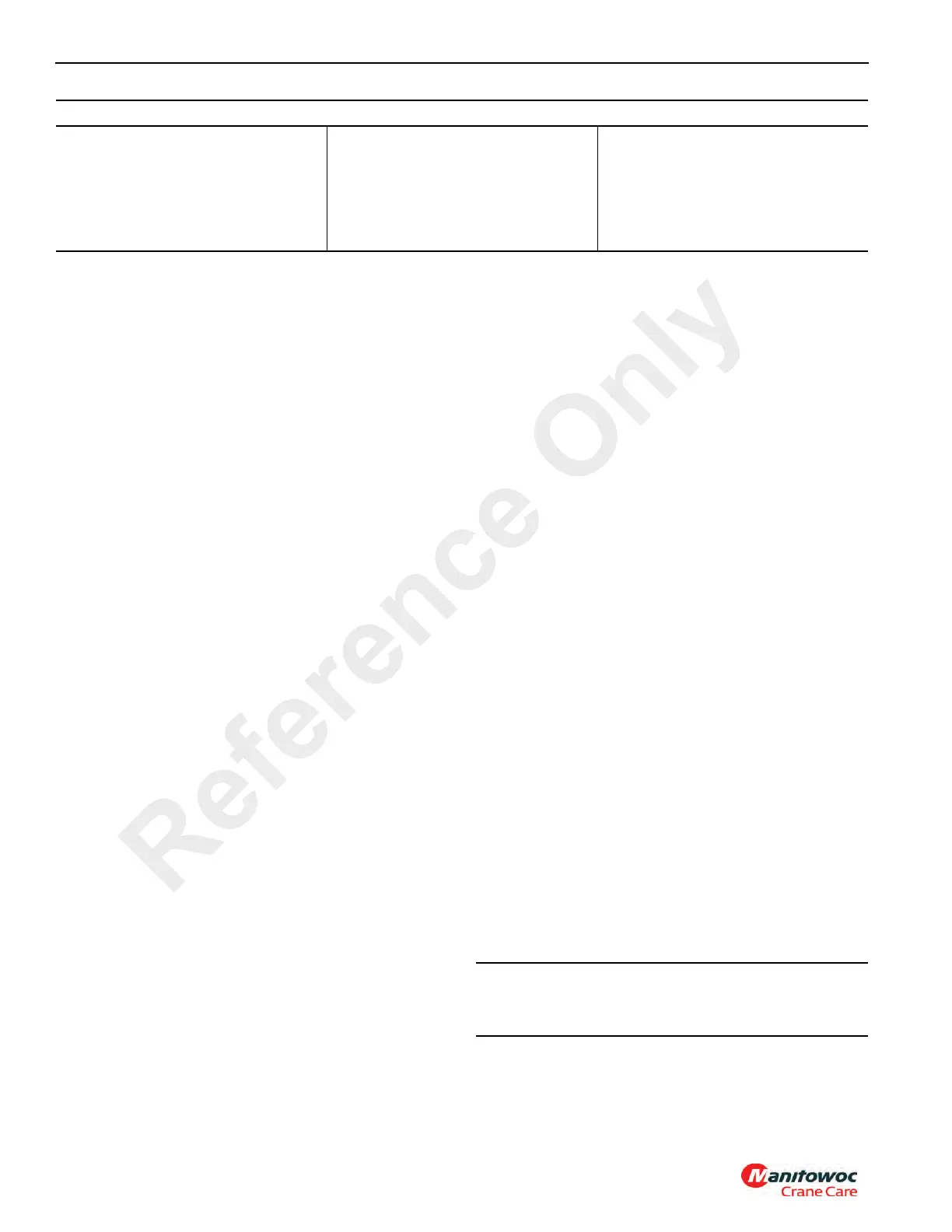